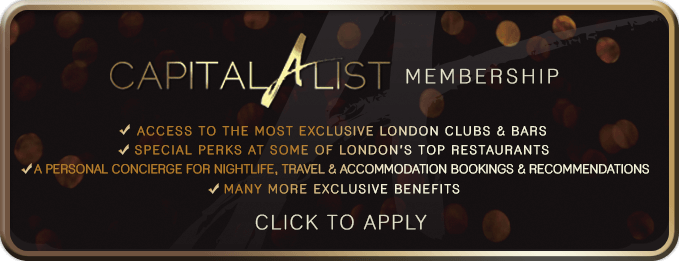Capital A List Membership includes access to exclusive clubs, bars, events and priority restaurant bookings in addition to many other benefits. For more information please visit Capital A List Membership.
London is home to some of the world’s most storied institutions, and the Oldest Private Members Clubs in London remain at the heart of its social, political, and cultural life. Steeped in centuries of tradition, these clubs were once the exclusive preserve of statesmen, aristocrats, artists, and adventurers, offering sanctuaries for conversation, fine dining, and camaraderie. From the 17th-century origins of White’s, where wagers and politics shaped history, to the intellectual haven of The Athenaeum and the theatrical charm of The Garrick, each club reflects a unique chapter in Britain’s heritage.
Though many have adapted over time—welcoming women, modernising facilities, and broadening their memberships—their essence remains unchanged: elegant spaces designed for connection, reflection, and influence.
Boodle’s
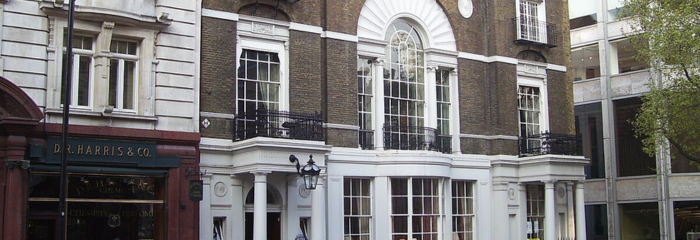
Established in January 1762 by William Petty, the Earl of Shelburne—who would later become Prime Minister and the Marquess of Lansdowne—Boodle’s holds the distinguished title of the second‑oldest private members’ club in London (and the world), behind only White’s. Originally housed at No. 50 Pall Mall as part of Almack’s, the club earned its name from Edward Boodle, the head waiter who eventually took over management in the 1760s.
In 1782, Boodle’s relocated to its elegant and still‑standing clubhouse at 28 St James’s Street, a fine building designed in 1775 by John Crunden. Over the nineteenth century, the interiors were enhanced by architects such as J. B. Papworth—who crafted a new reading room, bow window, kitchen, and dining room—and later additions included billiard and smoking rooms by Mayhew & Knight of Argyll.
Boodle’s has always held its own quiet prestige, favoured by the country‑gentry set and gently distancing itself from political entanglements. Its membership boasts illustrious figures such as Edward Gibbon, Adam Smith, David Hume, Ian Fleming, William Wilberforce, and Winston Churchill (elected as an honorary member). At the same time, its celebrated Orange Fool dessert remains a culinary tradition.
Purchased outright by its members in 1896, Boodle’s continues its legacy of refined camaraderie, enriching London’s Clubland with elegance and charm.
Website: Boodle’s
Address: 28 St James’s St, London SW1A 1HJ
Brooks’s
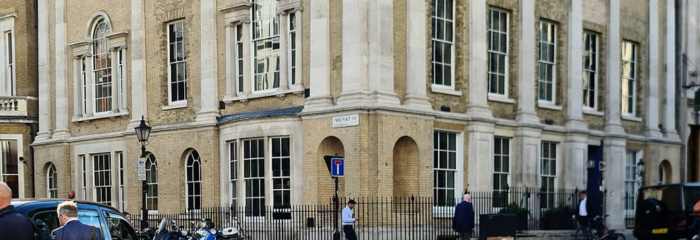
Founded in 1764 by 27 distinguished Whig nobles, including the Duke of Portland and the Duke of Roxburghe, Brooks’s emerged from an earlier group that met at Almack’s on Pall Mall, formed after certain gentlemen were blackballed from White’s. Among its early illustrious members was the young Charles James Fox, elected at just sixtee.
In 1777, wine merchant and moneylender William Brooks—then managing Almack’s—commissioned Henry Holland to build the club’s new Palladian-style clubhouse on St James’s Street. Completed in October 1778, the building featured yellow brick, Portland stone, and elegantly neoclassical interiors.
Brooks’s became the de facto Whig stronghold in London’s Clubland, setting itself apart from the Tory-aligned White’s, while Boodle’s catered more to the conservative rural gentry. Its early reputation was built on lavish all-night gaming sessions—members staking fortunes on whist and hazard without ever seeing a bill; accounts were paid from the winnings.
One of the club’s most legendary entries in its betting book remains a notorious wager from 1785, when Lord Cholmondeley offered Lord Derby 500 guineas if he could seduce a woman in a hot-air balloon one thousand yards above the earth. Horace Walpole famously noted, “the gaming at Almack’s… is worthy the decline of our Empire” for its excess.
Architecturally, the interiors remained essentially unchanged until the 1880s, when John MacVicar Anderson added a larger dining room with a library above, extending the clubhouse onto a neighbouring property. In 1978, Brooks’s absorbed the St James’s Club, bringing in a wealth of literary, diplomatic, and European aristocratic members, along with the portrait collection of the Society of Dilettanti—portraits by Reynolds, Lawrence, Sargent, and others gracing its walls.
Website: Brooks’s
Address: St James’s St, London SW1A 1LN
White’s
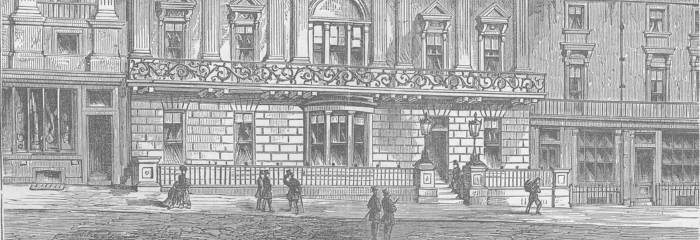
Founded in 1693 as Mrs. White’s Chocolate House by Italian immigrant Francesco Bianco, the club began as a hot chocolate emporium in Mayfair, selling theatre tickets as a side business. It swiftly evolved into a haven for London’s elite, noted particularly for its early 18th-century reputation as a gambling den frequented by “the gamesters of White’s.” Jonathan Swift famously referred to the club as the “bane of half the English nobility.” It is now one of the oldest private members clubs in London.
In 1778, White’s settled into its current clubhouse at a Grade I listed building that remains its distinguished home to this day. The addition of the iconic bow window in 1811 added architectural drama and social prestige. Beau Brummell famously held court there as the arbiter of fashion, and after his exile in 1816, the seat of honour passed to William Arden, 2nd Baron Alvanley. His legendary £3,000 wager on which raindrop would reach the bottom of the windowpane first adds to the club’s folklore.
From 1783 onward, White’s became the unofficial headquarters of the Tory Party, setting itself in sartorial and ideological contrast to Whig-aligned Brooks’s nearby—a distinction that continues to echo today.
Its membership reads like a chronicle of British nobility: Arthur Wellesley, 1st Duke of Wellington; Prince Philip; King Charles III; Prince William; and for fifteen years, David Cameron—who resigned in 2008 over the club’s refusal to admit women. Though Queen Elizabeth II was granted rare exceptions to enter in 1991 and 2016, White’s remains unwavering in its men-only tradition.
Beyond its political clout and exclusivity, White’s retains classic gentleman’s club amenities: a billiards room, private dining quarters, and intimate social spaces—all designed for discreet indulgence and camaraderie.
Website: White’s
Address: 37 St James’s St, London SW1A 1JG
The Athenaeum
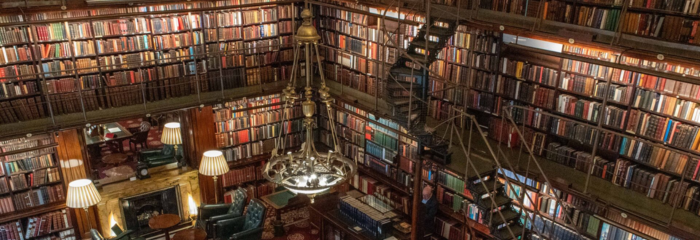
Founded in 1824 under the initiative of John Wilson Croker, then Secretary to the Admiralty, The Athenaeum emerged as an elegant sanctuary crafted for the intellectually distinguished—artists, writers, scientists, and thinkers—rather than the traditional military or high-society fraternities. First Chairman Sir Humphry Davy and Secretary Michael Faraday gave the club a cerebral pedigree from its very inception.
Its spectacular Neoclassical clubhouse was designed by a youthful yet visionary Decimus Burton and completed in 1830. A dignified Doric portico greets members, crowned by a statue of the goddess Athena, and a striking Parthenon‑style frieze contributes a whisper of ancient wisdom to its stately façade. The original structure featured two principal floors—later expanded in the late 19th century to include upper levels, including a smoking room and members’ bedrooms.
Inside, The Athenaeum boasts one of London’s most extraordinary club libraries—with about 70,000 volumes housed across multiple rooms—the serene Drawing Room, convivial Coffee Room, Morning Room, and a restored Smoking Room (now smoke-free), alongside guest bedrooms.
It has always remained proudly non‑partisan, fostering a balanced membership across disciplines and ideologies—where “Liberals and Tories were well balanced” and debate flourished without political division. The club remained men-only until 2002, when women were admitted on equal terms, marking a progressive chapter in its storied history.
Website: The Athenaeum
Address: 107 Pall Mall, London SW1Y 5ER
The Garrick Club
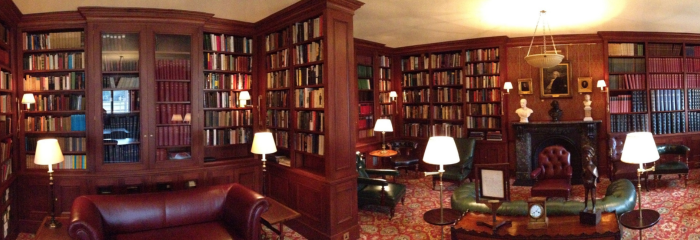
Founded in 1831 under the patronage of the Duke of Sussex, The Garrick Club was envisioned as a refined haven “where actors and men of refinement might meet on equal terms”—a bold aspiration in an era when theatre professionals were often considered socially marginal.
Named in tribute to the legendary 18th-century actor David Garrick, the Club brought together patrons, playwrights, actors, musicians, and publishers—a cosmopolitan mix that included Charles Dickens and William Makepeace Thackeray. In fact, it famously played host to a public quarrel between Dickens and Thackeray, capturing the spirit at the heart of its membership.
In 1860, the Club moved into its current Italian palazzo–style clubhouse, designed by Frederick Marrable. The Grade II*–listed building exudes grandeur, with Italianate mouldings and a sweeping staircase. Inside, The Garrick Club boasts one of the most remarkable theatrical art collections in existence—over 1,000 paintings, drawings, and sculptures, along with a distinguished library of manuscripts, play-texts, playbills, and programmes. Members also enjoy excellent dining, comfortable accommodations, and exclusive events.
A longstanding hallmark was its men-only membership—unchanged for nearly two centuries. However, facing growing scrutiny, in May 2024 the Club voted—with around 60% in favour—to admit women for the first time, marking a historic moment of transformation. Since then, acclaimed actresses Dame Judi Dench, Dame Siân Phillips, and Celia Imrie have become the first female members, although the process for broader inclusion remains gradual.
Website: The Garrick Club
Address: 15 Garrick St, London WC2E 9AY
Royal Thames Yacht Club
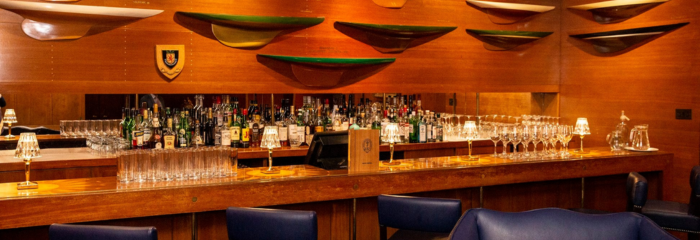
Founded in 1775 by Prince Henry, Duke of Cumberland and Strathearn, who offered a silver cup for a regatta on the Thames, the Cumberland Fleet—later the Royal Thames Yacht Club—emerged as the oldest continuously operating yacht club in the world. The Club’s name evolved in two significant steps: in 1823 it became the Thames Yacht Club, and in 1830, upon William IV’s accession, it earned its royal moniker.
Initially based in coffee houses, the Club moved into formal premises from 1857, briefly occupying locations on St James’s Street, Albemarle Street, and Piccadilly, before settling at its current address: 60 Knightsbridge, overlooking Hyde Park, since 1923. The existing purpose-built clubhouse was developed between 1961 and 1963.
From the outset, the Club played a pioneering role in yachting. It introduced early fleet-racing concepts, developed the influential Thames Measurement tonnage system in 1854, and extended racing grounds to the Solent and beyond.
Today, the Royal Thames Yacht Club offers a full spectrum of world-class yachting experiences: from fleet and match racing to cruising, both in UK waters and international destinations. Its social calendar features traditional black-tie dinners, regatta celebrations, prizegiving evenings, engaging speaker talks, and ladies’ lunches. The Club’s commitment to sailing culture also shines through its Charitable Trust, which funds opportunities for young people to join ship crews and experience life at sea.
Royal patronage has long shaped the Club’s heritage: members historically gathered under royal flag-officers such as Louis Mountbatten, with the Patron currently being King Charles III. Remarkably, in 2019, Jennifer Woods became the first woman to hold the title of Rear Commodore in the Club’s 244-year history.
Website: Royal Thames Yacht Club
Address: 60 Knightsbridge, London SW1X 7LF
The Travellers Club
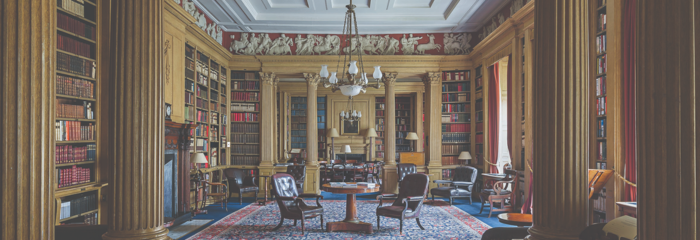
Founded in 1819, the Travellers Club was born from Viscount Castlereagh’s vision of a sanctuary where gentlemen who had journeyed at least 500 miles from London could gather, and extend hospitality to distinguished foreign visitors—an idea made all the more significant in the wake of the Napoleonic Wars. Notably, its founding committee featured esteemed figures such as Lord Aberdeen, Lord Palmerston, and the Duke of Wellington.
Designed by Sir Charles Barry—the very architect of the Houses of Parliament—the Italian Renaissance–inspired palazzo was completed in 1832, with its striking tower added in 1842. Inside, the Travellers Club preserves its 19th-century elegance: the exquisite Library—canonized by Lord Curzon as one of London’s most charming rooms—boasts a vast collection of travel literature and a cast of the Bassae Frieze from the Temple of Apollo. Spacious formal rooms—such as the Smoking Room, Morning Rooms, Cocktail Bar, and the Coffee Room—retain the rich period décor and gracious layout characteristic of elite Pall Mall clubs.
Membership remains highly exclusive. It traditionally comprises diplomats, explorers, distinguished travellers, and senior statesmen. Honorary members have included royalty and foreign ambassadors. Despite ongoing debates around its men-only policy, the club continues its storied legacy into the 21st century.
Website: The Travellers Club
Address: 106, 106 Pall Mall, London SW1Y 5EP
The Arts Club
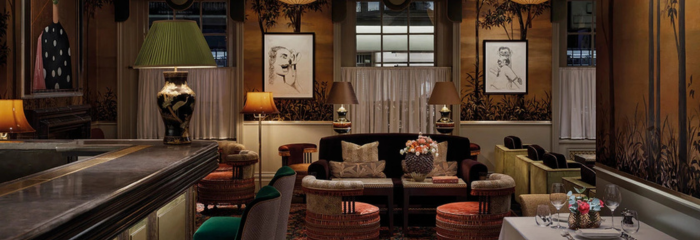
Founded in 1863 by literary luminaries including Charles Dickens, Anthony Trollope, and Lord Leighton, The Arts Club is one of the oldest members clubs in London and was envisioned as a refined gathering place for individuals connected—either professionally or passionately—with the arts, literature, or sciences.
Initially located at 17 Hanover Square, after thirty years it relocated in 1896 to its present, elegant 18th-century townhouse at 40 Dover Street. This graceful residence was rebuilt following significant bomb damage sustained during the Blitz, yet preserved treasured features—including its original main staircase and a grandfather clock that still stands in the main hall.
Over the decades, the club’s membership roster has been nothing short of illustrious—embracing writers such as Dickens, Wilkie Collins, Thomas Hughes; musicians like Franz Liszt and Charles Halle; and artists including Leighton, Whistler, Millais, Rodin, and Monet.
At its core, The Arts Club remains a vibrant cultural hub. It melds intimate lounges and elegant dining spaces—including the Brasserie, Ofelia café, Kyubi (a contemporary Japanese restaurant), Oscuro (the Cuban-inspired cigar lounge), and the late-night bar Leo’s—with a compelling arts programme featuring rotating exhibitions, gallery tours, live music, and talks. Curated under the guidance of Wedel Art, the club’s permanent collection includes works by John Baldessari, Tomas Saraceno, and John Stezaker, alongside site-specific installations.
Website: The Arts Club
Address: 40 Dover St, London W1S 4NP
The Oriental Club
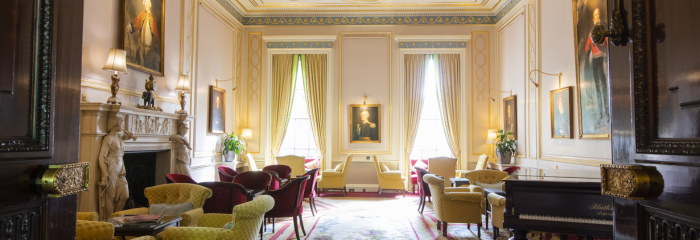
Founded in 1824, The Oriental Club was established by Major‑General Sir John Malcolm with the Duke of Wellington as its esteemed inaugural President. It was originally conceived as a dignified gathering space for “noblemen and gentlemen associated with the administration of our Eastern empire,” including officers of the East India Company and international officials with ties across Asia.
After its initial residence on Grosvenor Street and a brief stint in Hanover Square, the Club relocated in 1962 to its present home, the magnificent Stratford House—a Grade I‑listed Georgian masterpiece dating to the 1770s, originally built for the Earl of Aldborough with a refined Robert Adam–inspired design.
Over two centuries later, The Oriental Club remains a celebrated central‑London enclave—valued by members who cherish its seamless blend of charm and modern luxury. Today, it offers 32 bedrooms, a refined dining room, bars, drawing rooms, a courtyard terrace, a billiards room, private dining spaces, business facilities, and even a South Asian‑style Shamiana for gatherings.
The Club preserves its culinary pedigree rooted in the 19th century. Its then‑chef, Richard Terry, authored one of Britain’s earliest Indian cookery books, Indian Cookery, and that influence continues to inspire the Club’s refined yet cosmopolitan menus today
Website: The Oriental Club
Address: Stratford House, 11 Stratford Pl, London W1C 1ES
The Carlton Club
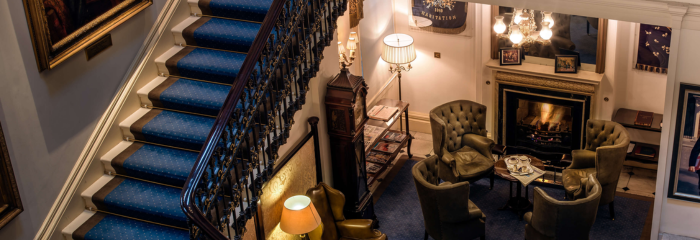
Founded in 1832, The Carlton Club is another of the oldest private members clubs in London emerged in the wake of the 1831 General Election’s sweeping reform victory, established by Tory peers, MPs, and notable gentlemen—including the Duke of Wellington—as a strategic cornerstone for Conservative coordination long before the creation of Conservative Central Office. The club took its name from its earliest setting at Carlton Terrace, graciously provided by Lord Kensington.
By 1835, the Club had grown in reputation and resources enough to commission a bespoke clubhouse on Pall Mall. Unfortunately, that historic building was destroyed during the Blitz, and in 1940, The Carlton occupied the former clubhouse of Arthur’s Club—an early members-owned institution. Despite the upheaval, the Club preserved many of its treasured portraits and relics, carrying them into its new home.
The Carlton’s political legacy is indelible. It remains a bastion of Conservative tradition—hosting the pivotal 1922 Carlton Club meeting, where backbench MPs voted to withdraw from David Lloyd George’s coalition, reshaping British political history. Its endurance has not come without trials. On 25 June 1990, the Club was the target of an IRA bombing, injuring dozens and tragically claiming the life of Lord Kaberry of Adel; the resilience demonstrated in its aftermath is testament to its enduring stature.
Membership has evolved: originally men-only, the Club admitted women as full members in 2008, rectifying a long-held tradition and acknowledging modern values.
Today, The Carlton Club radiates refined hospitality and elegance. Its sumptuous amenities—including the Thatcher Drawing Room, the Macmillan Terrace bar, the Churchill and Wellington dining rooms, and a discrete Cabinet Room—combine historic charm with outstanding service. With 24 beautifully appointed bedrooms, it serves as a social haven and a retreat for members and guests
Website: The Carlton Club
Address: 69 St James’s St, London SW1A 1PJ
Currently Featured
From Michelin Excellence to the Roux Brothers and Pierre Koffmann, Chef Sameer Taneja’s Benares: A Journey Back Home

What a journey this guy’s been on. I had the chance to sit down with Chef Sameer Taneja, the executive chef at Benares in Berkeley Square. You’d expect a Michelin-starred chef with his CV to be all puffed up with self-importance, but not Sameer. He’s not the type to humble brag with his hand earnestly resting on his chest, telling you ‘how grateful and humbled’ he is in that way that makes you cringe. No, […]
Blue Marlin Ibiza Club London

Blue Marlin Ibiza Member’s Club in London is part of the club’s extensive portfolio. Known for its elegant beach clubs in Ibiza and other international locations, Blue Marlin is a reference for luxury and the joy of celebrating life’s pleasures. Located at the Mondrian Shoreditch on Curtain Road, their London venue is a slice of Ibiza’s famed party atmosphere in the East End. The Blue Marlin Ibiza in London aims to create a haven of […]
Mosimann’s – A Look Inside London’s Famous Members Restaurant
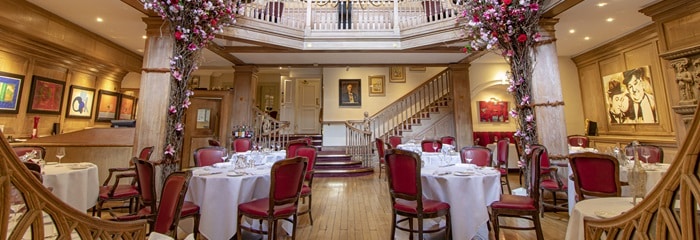
When one utters “Darling… I’m just popping in for a spot of lunch at a luxurious dining restaurant in Belgravia that catered to both Harry and William’s wedding; it has John Major, John Cleese and a long list of actors, writers, and politicians as regulars too. The rub is that you must be a member to even order a starter, and it catered for the Olympics, US presidents and some of the most powerful people […]
